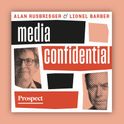“Assassination is the extreme form of censorship”. This George Bernard Shaw maxim ran through my mind as I walked around the one-room Banned Books Museum in Tallinn’s Old Town. As I examined the mind-boggling display of 400-odd titles from more than 100 countries—from George Orwell’s Nineteen Eighty-Four to Vladimir Nabokov’s Lolita and Mikhail Bulgakov’s Heart of a Dog; from the opuses of Stalin, Hitler and Mao Zedong to the works of Nelson Mandela and the Dalai Lama—I had a perverse, unpleasant sense of being at home. I was remembering my first, Soviet, life where censorship was part of the daily routine.
“We are trying to be politically neutral,” says Joseph Dunnington, a young screenwriter from Dundee, who founded the Museum singlehandedly after a spell in China, where he was confronted with censorship in its ugliest forms. “We offer a study in censorship as it exists in reality.”
The books spoke for themselves in that tiny museum. And Tallinn was, undoubtedly, an appropriate home for it. Unbeknown to many a tourist, its cityscape used to feature (and, to an extent, still does) behaviour that is a gruesome relic of Soviet censorship: the jamming of foreign TV and radio broadcasts.
These days, if you stand on Toompea hill, looking down at the Old Town’s impressive panorama of tiled Gothic roofs, church spires and guard towers, you will be spared the sight of the two huge and ugly radio masts that dominated the cityscape until the early 1990s. Their main purpose was to send out waves of fuzz on the same frequencies as Finnish and Swedish TV broadcasts, to which Tallinn residents clandestinely tuned in with the help of crude homemade receivers. The strength of jamming was such that it affected the quality of the official Soviet broadcasts from Moscow!
Even in the 1990s, very few Tallinners knew that, in fact, there were not two jamming towers, but three! The third and the most powerful was hidden inside the spire of Tallinn’s oldest church, St Olaf’s (Oleviste Kirik in Estonian). In the 12th century, when the church was built, it was the world’s tallest structure. The Soviets, with no concern for Estonian history and values, took it over in 1944.
Totalitarian regimes always achieve the opposite of what they aim for. There was no better publicity for a foreign radio station (like the Voice of America, the BBC World Service or Radio Free Europe) than jamming it. Likewise, there was no better marketing for a book than banning it outright. I first read Nineteen Eighty-Four in Moscow in the mid-1980s. A dog-eared and soiled paperback was lent to me for one night only, and next morning I was to pass it to the next person in line.
That book was strictly banned in the USSR. The punishment for being caught in possession of it could be a prison term. That only added to the sheer thrill of reading it!
One of the most bizarre exhibits in the museum of banned books is the Bookbinding Manual by V Balandin, published in the Soviet Union (in Russian) in 1966 and banned shortly afterwards. But how did that seemingly apolitical and appropriately well-bound guide end up on the list of forbidden books, compiled monthly by Glavlit, the real-life Soviet analogue of Orwell’s Ministry of Truth?
Soviet rulers never underestimated the importance of a printed word. Photocopiers, typewriters (all registered and numbered) and, surely, bookbinding manuals, too, were treated as a threat to the USSR’s existence, comparable only to the subversive plots of the CIA, FBI and Mossad combined. Manuals on the production of books could, at least theoretically, aid the creation and distribution of Samizdat: clandestinely published books and periodicals, some of which have now found themselves on the shelves of the Banned Books Museum.
My mother told me that after Lavrentiy Beria, head of the Soviet secret police and Stalin’s henchman, was executed—or censored to the extreme as George Bernard Shaw might say—in 1953 for being a “British spy”, all subscribers to the multi-volume Great Soviet Encyclopaedia received several printed sheets in the post, to be glued into the letter “B” volume. The enclosed instructions requested that all the existing pages about Beria be cut out, and one disproportionately lengthy article on the Bering Strait be inserted in their stead. Special Glavlit inspectors would conduct random house checks to make sure everybody had complied. More than just a posthumous political assassination, this was an attempt at rewriting history itself.
Tallinn’s small museum of banned books reminds me that history can indeed be rewritten, but it cannot be changed. The spire of St Olaf’s Church, still the city’s tallest structure, looms above the capital of free and independent Estonia. It is good to know that nothing murderous is hidden inside it any longer.













